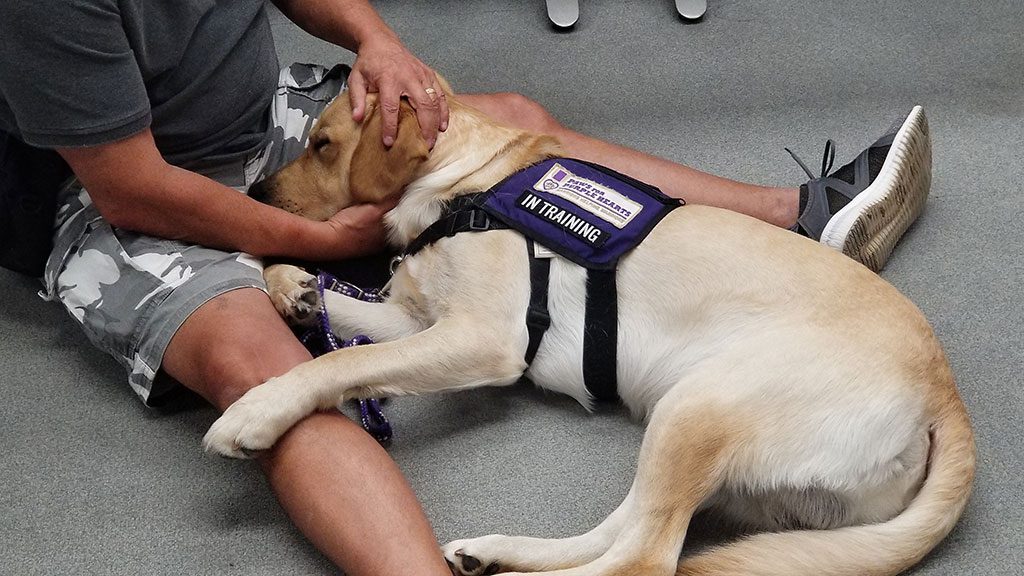A Brief History of Service Dogs
As far as providing companionship, dogs have been man’s best friend for at least 14,000 years! When exactly dogs were first used to help people with disabilities remains a mystery, but ancient artwork from Pompei and China, appear to depict scenes in which dogs are being used to guide people with visual impairments.
In 1785, a Frenchman named Valentin Haüy founded the First Institute for Blind Children and introduced the idea of using dogs to help those with visual impairments, but it took until after World War I for the modern Guide Dog movement to be developed. War Dogs were retrained from their battlefield duties to assist thousands of soldiers who lost their vision to combat and mustard gas. The success of these dogs in giving soldiers back their independence led to the establishment of formal Guide Dog training programs.
As the understanding of the capabilities of dogs grew, so did the range of tasks dogs could perform. In 1975, our very own president and CEO, Dr. Bonita “Bonnie” Bergin, coined the concept and term “Service Dog.” Dr. Bergin realized that in addition to servicing individuals with visual impairments, dogs could be trained to assist with mobility and psychiatric conditions as well.
In 1991, Dr. Bergin went on to spearhead the founding of The Bergin College of Canine Studies; the only school dedicated to educating dog trainers. Bergin held a program at El Camino Continuation High School in which students assisted in the training of dogs to serve people with disabilities. This program was expanded to include the local juvenile detention center in order to give at risk teens purpose and greater self-esteem.
Dr. Bergin says one of her staff came back from the juvenile detention center program and said when he was watching a newscast about the struggles of Veterans in reintegrating into society, he realized this sort of Canine-Assisted recreational therapy program was an absolute perfect fit for our Warriors, and in 2006 this program became the beginning of the Paws for Purple Hearts we know and love today! In July 2008, Paws for Purple Hearts held the first Canine-Assisted Warrior Therapy® program at the Palo Alto VA’s Men’s Trauma Recovery Program in Menlo Park, California, with one hundred and thirty participants. Patients immediately responded to learning how to train dogs as a form of therapy for themselves and reported feeling a greater sense of purpose knowing that they have a new mission of helping a comrade-in-arms by helping to train a Service Dog. From the success of the program, Paws For Purple Hearts expanded to the East Coast, and presently has six facilities nationwide.
Guide Dogs were the only type of Service Dogs legally recognized in the United States, until 1990, when the Americans with Disabilities Act (ADA) was passed, ensuring individuals with disabilities have the right to be accompanied by their Service Dog in public places. From Guide Dogs, to Psychiatric Service Dogs, to Mobility, or Medical Alert Dogs, it’s absolutely astounding how many ways these amazing canines have come to help people. We may not know when dogs first began serving humans, but we know for certain that the love between humans and dogs is a tale that’s older than recorded time!
Looking to help our cause? We couldn’t do what we do without our supporters! Please consider helping us spread the word about our mission to your community. Your support allows us to continue to fulfill our mission in helping Veterans and Active Duty Service Members. By simply helping us get the word out there, you are helping us to continue to fulfill our mission. Please also consider a monetary donation or donating from our Amazon Wishlist to help our cause.







 Combined Federal Campaign (CFC) #43093
Combined Federal Campaign (CFC) #43093